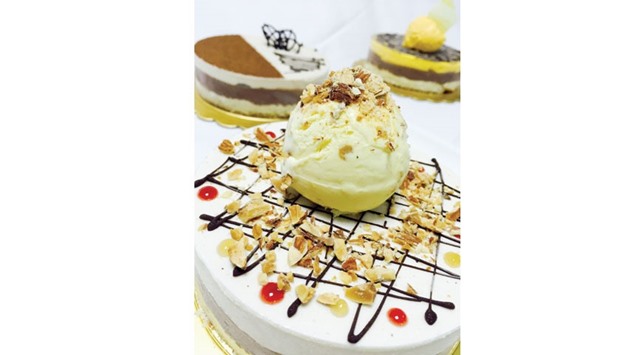In this scorching summer heat, we all strive to relish on something ice cold, creamy, flavourful, and what comes to your mind is ice-cream. But of late, there has been a new food trend — the gelato.
For a layman it is the same as an ice-cream but with a different name. However, I prefer to call gelato as ice-cream’s Italian cousin. They are from the same family of frozen desserts but are prepared in different ways and the ingredients used to produce them also vary. This translates to different prices too.
Gelato vs ice-cream
First thing that you notice about gelato is that it is a lot creamier than ice-cream and thus much smoother. The aim of an ice-cream making is to freeze the ingredients by keeping the ice crystals as small as possible, so they are always churned while they are being frozen. Churning also incorporates air into the ingredients and makes it lighter and fluffier. The gelato also uses the same technique but is churned at a much lower temperature, thus incorporating less air and resulting in a denser and creamier dessert.
The air incorporation is called overrun. Most ice-creams have an overrun of 25%, which means that the ice-cream increases its volume by 25% after churning, and some economical versions can go up to 50%-60%.
The next not-so-significant difference is the sugar content, which depends on choice of consumers and the manufacturer’s recipe.
The third difference is the flavour of the product. People always say that gelato is more flavourful, as compared to an ice-cream. The reason is the fat content — gelato has less fat content so it coats your tongue less as compared to ice-cream and you taste the flavour better and enjoy it more. That said, there are intense flavoured ice-creams as well, which are as flavourful as gelato.
Then there is a difference in the preparation and serving temperatures of gelato and ice-cream. Also you may be wondering if gelato has less amount of fat and less air, why is it always so creamy and smooth and easy to scoop out. Temperature is the factor that affects this gelato texture. Ice-creams are prepared at -35 Celsius and stored and served at -18 Celsius.
Gelatos are produced at -10 Celsius and are stored and served at -14 Celsius. This means that gelato is kept at warmer temperatures than ice-creams to get a creamier effect. One question that you may ask now is why can’t we store ice-cream at the same temperature as gelato. The higher fat and water emulsion in ice-cream will start to melt at warmer temperature and will turn your frozen dessert soupy.
There is also a difference in the ingredients that go into gelatos and ice-creams. To get better emulsion, eggs are commonly used in ice-cream production. Gelato, in contrast, can be easily made without eggs. It is noteworthy that even when the gelato does not use cream, it may taste creamy owing to the factors discussed above. In fact for a person not so familiar with gelato production, it is difficult to distinguish between gelato that contains cream and one that doesn’t.
At the end of the day though, it is all delicious. We can go on and on about the minute differences between gelato and ice-cream, and which one of them is better. But at the end of the day it’s just a creamy, flavourful frozen dessert. Rather than arguing about it, I would prefer to grab a scoop of either one of them from the next available frozen dessert parlour.
Now you may be wondering if the unused or sparingly used ice-cream machine you bought after being tempted by the salesperson or after you watched your favourite cooking show can be of any help to churn out some homemade gelato. The answer is yes. The ice-cream machines available for domestic use do not churn at the same speed as that of commercial ice-cream making machines. So churn your gelato less and store it at a warmer temperature as compared to ice-cream and you will get the art of making a perfect gelato. Just remember the amount of air incorporated is the key to make a perfect gelato.
Almond and
Pumpkin Gelato
Ingredients
Pumpkin purees 2 cups
Roasted almonds 40 gm
Cooking cream 1 cup
Fresh milk 1 cup
Castor sugar 3 tbsp
Cinnamon powder ¼ tsp
Salt a small pinch
Garnish
Pistachio powder to garnish
Method
Remove the skin and deseed the yellow pumpkin.
Cut roughly into cubes.
Boil in water till the pumpkin is cooked and soft.
Refresh the pumpkin in cold water and allow it to cool down.
Blend to get a puree.
In a bowl combine pumpkin puree, cream, milk, sugar and nutmeg and mix well.
Pour this mixture into your ice-cream maker according to the manufacturer’s directions.
When you are halfway through, add crushed roasted almonds.
Once the gelato consistency is achieved, pour the mixture into the storage container or desired moulds.

Almond and Pumpkin Gelato. Photo by the author
